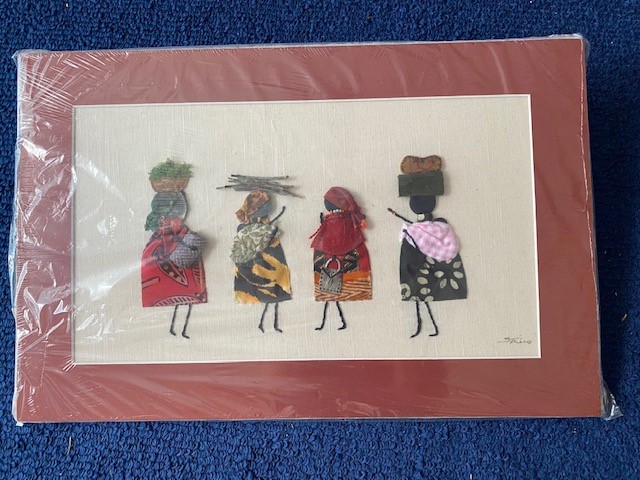The story behind one piece of artwork donated for the World Learning Art Auction
- Click here to see all submissions in the World Learning Art Auction
World Learning is celebrating its 90th Anniversary with a virtual art auction featuring works by alumni from across the World Learning family. Bidding runs from April 29 to May 13, with a virtual celebration held on the evening of May 12.
Shirley Triano is an SIT Graduate Institute alumna who submitted her artwork for the auction. In this story, she tells us about her SIT and Peace Corps experiences, and the artwork derived from a quilt that was inspired by women in Botswana.

By Shirley Triano
In August 2002, I arrived at SIT Graduate Institute for the Intercultural Service, Leadership, and Management program. I was blessed with two scholarships and was most likely among a very small group of older students joining the class. My previous life experiences and international fieldwork proved to be a huge benefit to learning the sustainable development coursework. I was able to gain new skills for my continued international assignments.
Group work had many pros and provided a great opportunity to bond with a few students at a time and gain a variety of valuable perspectives from all participants. I even successfully built my first snowman—affectionately named Mr. Pim—who proudly stood his ground in front of the student center until late spring. What a wicked winter that was in Vermont—the most snow this Florida girl has ever seen. It kept me shivering in my newly purchased winter boots—my first and only pair!

I returned to the field for my practicum and research, spending a year in Namibia for a third Peace Corps assignment. From the beginning, I put the skills I’d learned at SIT into practice as a program development and training officer charged with developing and implementing programs to serve orphans and vulnerable children, as well as other members in the community. All my courses prepared me to write grants to secure funding for projects, teach business skills to newly minted entrepreneurs, and lead groups in HIV/AIDS education.
All my courses prepared me to write grants to secure funding for projects, teach business skills to newly minted entrepreneurs, and lead groups in HIV/AIDS education.
Shirley Triano
Before my valuable time at SIT, I began my first Peace Corps assignment in 1989 in Serowe, Botswana—a village with a rich history and home to an influential and controversial tribal leader who became the first president of Botswana in 1962 in the newly formed democratic nation. Sir Seretse Khama admirably kept the nation free from conflict as he led the country away from the British protectorate and the demands of the IMF and other lenders.
It was during this assignment that my love of sewing came to fruition. As headmistress of a small girls education center, I was responsible for teaching life skills—cooking, sewing, gardening, etc. The school needed funds that were not readily available, so we decided to make something to sell in a raffle—a popular way to raise funds in Botswana. With a lot of design help from the community, we got busy making a quilt.
Meanwhile, I embarked on my daily walks through the village, where I saw women carrying water, wood, and packages on their heads and babies on their backs. This inspired me to depict women working as my contribution to the quilt. The design was a hit, and some of the teachers and students even replicated it in their own way resulting in a rich kaleidoscope of life in Botswana.

Soon after, a care package arrived from friends back home and in it was a McCall’s magazine. In the spring 1991 issue, the magazine was requesting quilt squares for a contest honoring women who had made an impact in our lives. The teachers encouraged me to enter the design I had originally made for our quilt. And so I did—dedicating my design to the women of Botswana.
Much to my surprise, when I arrived back home in late 1991, I learned from my sons and brother that my quilt square was chosen to be one of only 20 squares on a “Grand Readers Quilt” for the McCall’s 1992 National Quilt Tour. In September 1992, I was able to see the quilt at the Martin Luther King Library in Washington, DC, while it toured libraries throughout the United States. When some of my family and friends saw the quilt, they wanted a framed version of my design. As a result of this experience, I have been making this design for many years using authentic African fabrics that I brought home from my travels throughout southern Africa.
